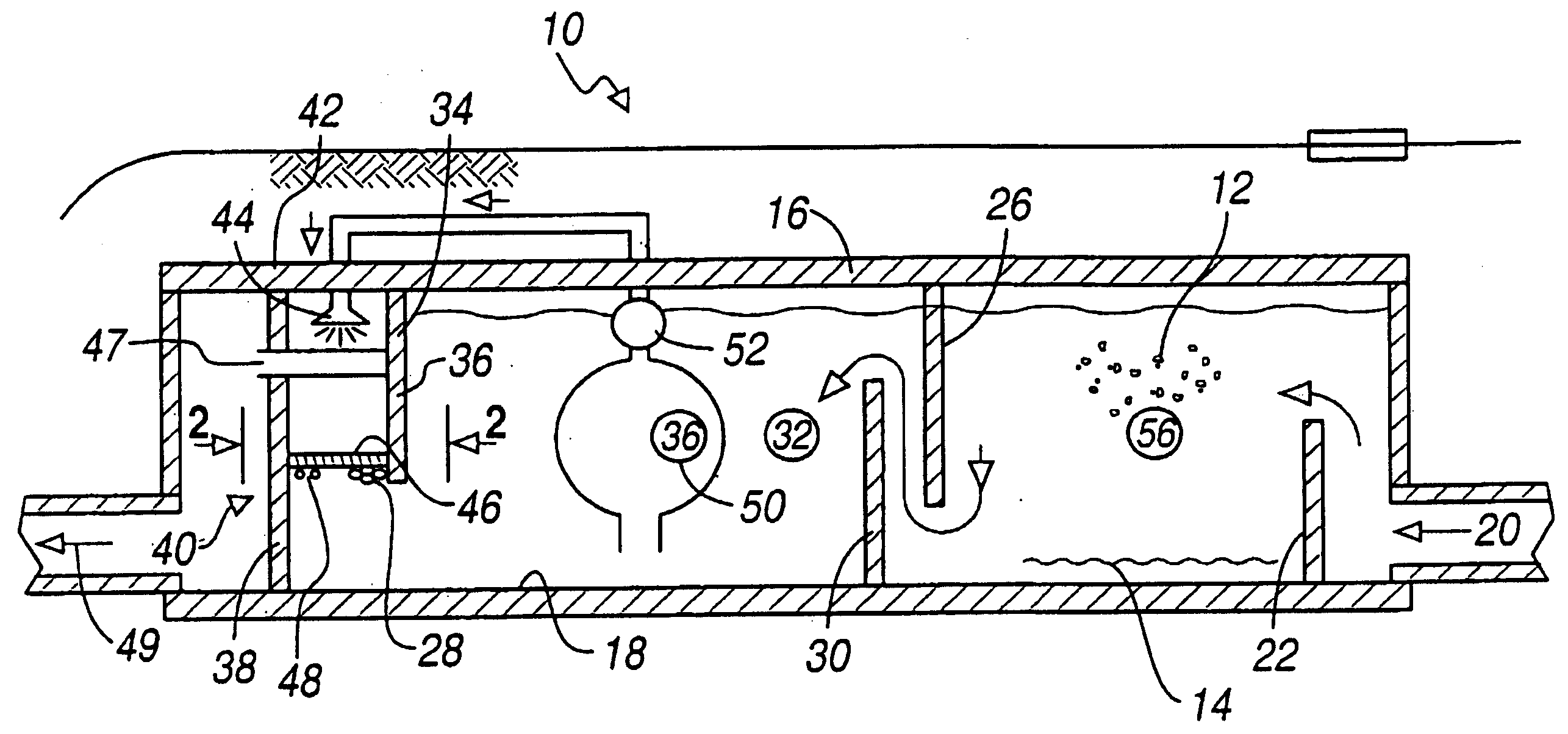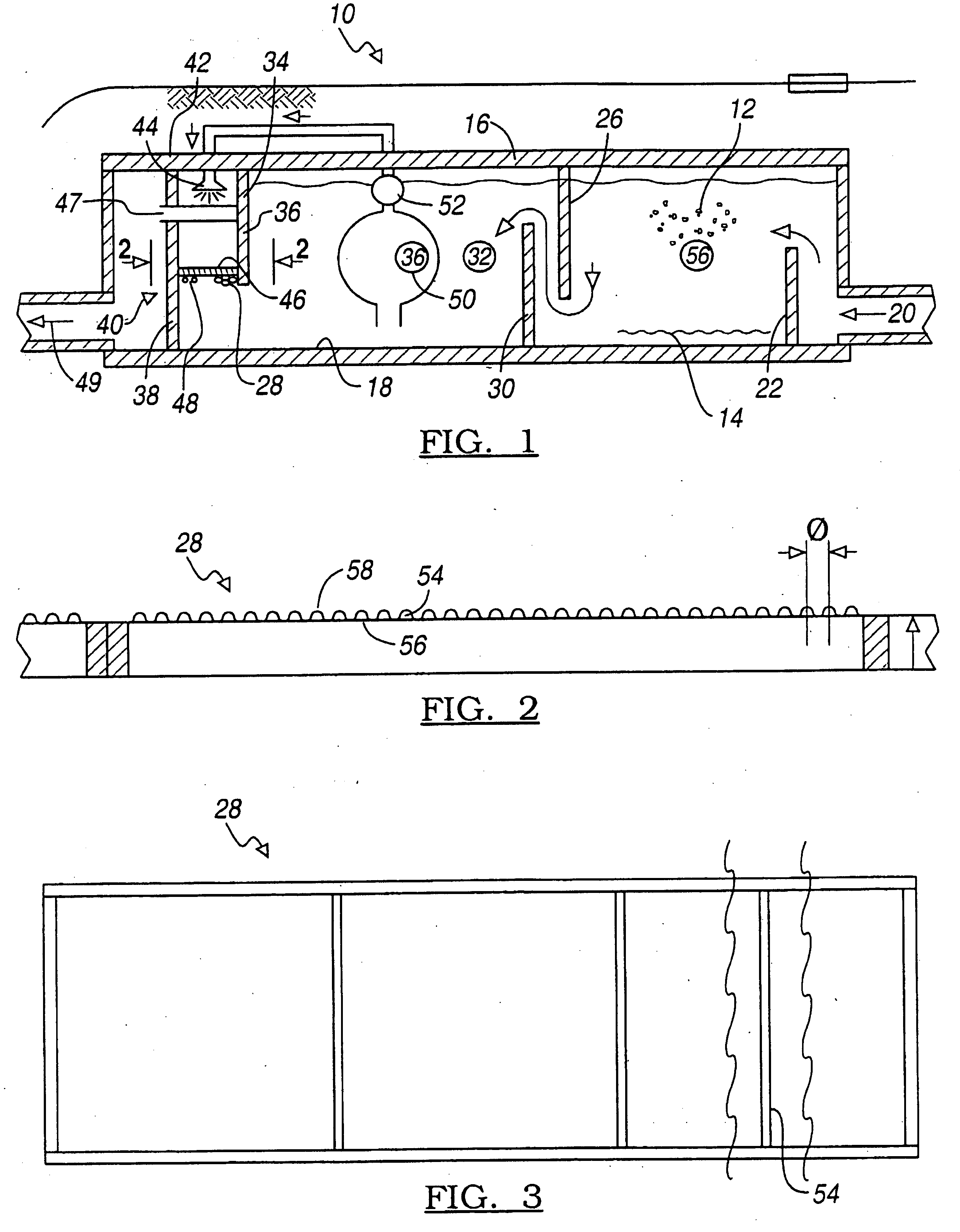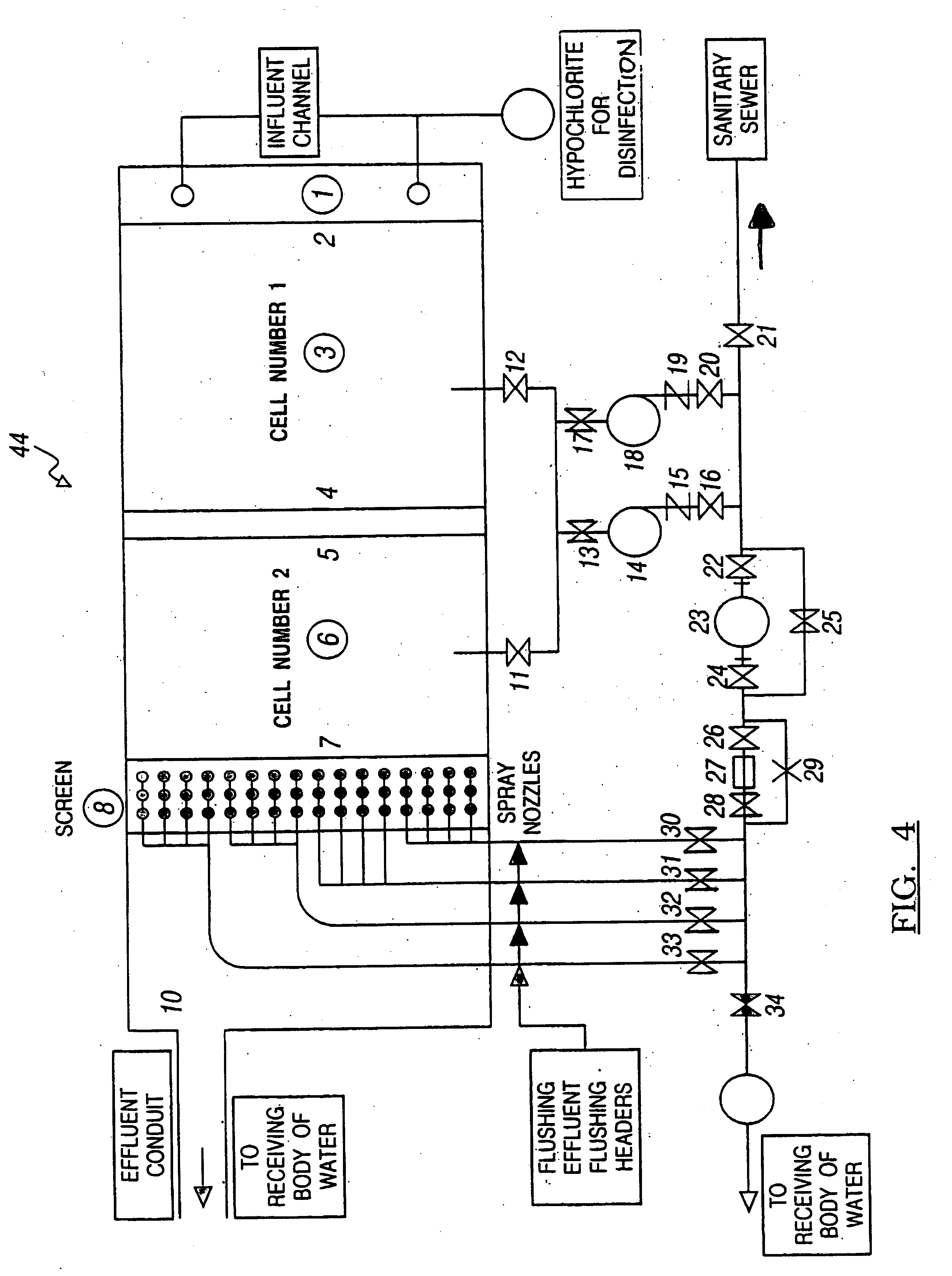Process and system for separating solids from combined sewer overflows
a combined sewer and solids technology, applied in the direction of sedimentation settling tanks, separation processes, liquid displacement, etc., can solve the problems of reducing the capacity of conventional storage and ducting systems, and affecting the quality of water
- Summary
- Abstract
- Description
- Claims
- Application Information
AI Technical Summary
Benefits of technology
Problems solved by technology
Method used
Image
Examples
Embodiment Construction
)
[0023] Turning first to FIG. 1, there is depicted a retention treatment basin 10 that handles an influent of combined wastewater and sewer overflows. The influent includes floatable 12 and settlable solids 14. The basin is provided with a a floor 18 and may have a ceiling 16. One or more influent channels 20 duct the influent into the basin. Upon entry, the influent confronts a weir assembly 22 that extends upwardly from the floor. The weir assembly 22 is for simplicity depicted as having a single wall. It should be realized, however, the weir assembly 22 may have a plurality of wall systems that may or may not be interconnected. Depending upon flow rate, volume, time and weir height, the level of the influent may rise above the weir assembly 22 before passage into a cell 24. At least some of the settlable solids 14 are retained in the cell 24.
[0024] The embodiment of retention basin 10 that is depicted in FIG. 1 has two cells that respectively are indicated by the reference numer...
PUM
| Property | Measurement | Unit |
|---|---|---|
| length | aaaaa | aaaaa |
| length | aaaaa | aaaaa |
| gravity | aaaaa | aaaaa |
Abstract
Description
Claims
Application Information
 Login to View More
Login to View More - R&D
- Intellectual Property
- Life Sciences
- Materials
- Tech Scout
- Unparalleled Data Quality
- Higher Quality Content
- 60% Fewer Hallucinations
Browse by: Latest US Patents, China's latest patents, Technical Efficacy Thesaurus, Application Domain, Technology Topic, Popular Technical Reports.
© 2025 PatSnap. All rights reserved.Legal|Privacy policy|Modern Slavery Act Transparency Statement|Sitemap|About US| Contact US: help@patsnap.com



